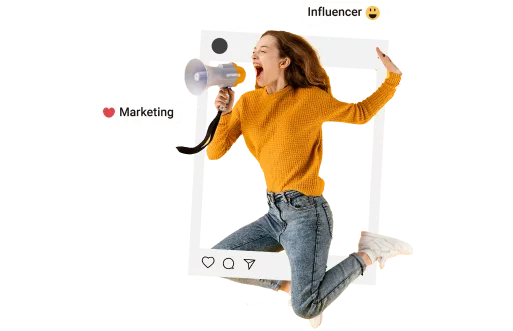Micro Vs. Macro: Is influencer marketing the right way?
Influencer marketing has become an integral part of digital marketing strategies for businesses of all sizes. With the rise of social media, influencers have emerged as powerful voices that can shape consumer behavior, enhance brand visibility, and drive conversions. However, the key question for many brands is whether to invest in micro-influencers or macro-influencers. Both have their unique advantages and challenges, and the right choice depends on a brand’s objectives, budget, and target audience.
Understanding Micro-Influencers and Macro-Influencers
 Micro-influencers are individuals with smaller, more niche followings—typically ranging from 1,000 to 100,000 followers. They tend to focus on specific areas of interest, such as fitness, beauty, or technology, and are highly engaged with their audience. Micro-influencers often have a more personal connection with their followers, which can translate into higher levels of trust and credibility.
Micro-influencers are individuals with smaller, more niche followings—typically ranging from 1,000 to 100,000 followers. They tend to focus on specific areas of interest, such as fitness, beauty, or technology, and are highly engaged with their audience. Micro-influencers often have a more personal connection with their followers, which can translate into higher levels of trust and credibility.
Macro-influencers, on the other hand, have a much larger following, usually in the range of 100,000 to several million followers. These influencers tend to be celebrities, well-known personalities, or digital creators who have built substantial online presences. Macro-influencers can offer massive reach and have a significant impact on brand awareness due to their wide audience base.
The Advantages of Micro-Influencers
- Higher Engagement Rates Micro-influencers tend to have more intimate relationships with their followers, which leads to higher engagement rates. Their audiences often see them as relatable and trustworthy, which makes their recommendations more impactful. Studies have shown that engagement rates for micro-influencers can be up to 60% higher than those for macro-influencers, making them an effective choice for brands looking to build meaningful connections with a targeted audience.
- Niche Targeting Micro-influencers typically focus on specific interests or industries, allowing brands to target niche markets more effectively. For example, a brand selling eco-friendly products might collaborate with a micro-influencer whose content revolves around sustainable living. This precision targeting helps ensure that the brand’s message reaches the most relevant audience, increasing the likelihood of conversion.
- Cost-Effectiveness Working with micro-influencers can be more budget-friendly compared to macro-influencers. While macro-influencers often charge hefty fees for sponsored posts, micro-influencers are more accessible to small and medium-sized businesses. A brand can even collaborate with multiple micro-influencers within the same budget, allowing for more diversified and authentic content across various segments of their target market.
The Advantages of Macro-Influencers
- Massive Reach One of the primary benefits of working with macro-influencers is their ability to reach a large audience. If a brand is focused on increasing overall awareness or wants to launch a product on a grand scale, macro-influencers can generate significant buzz. Their wide reach also makes them ideal for campaigns targeting a broad consumer base, where brand visibility is the main goal.
- Strong Influence on Consumer Decisions Macro-influencers often have a strong influence over their audience’s purchasing decisions, especially if they have established themselves as experts in a particular domain. For example, a well-known fitness influencer with millions of followers could effectively promote a new line of athletic wear, given their authority in the fitness space. Their endorsement can lead to instant credibility and boost sales.
- Professional Content Creation Many macro-influencers have the resources and experience to produce high-quality, professional content. For brands looking for visually appealing and polished promotional materials, macro-influencers can provide a level of production value that resonates with a wide audience. This ensures that the brand’s message is presented in a way that is both attractive and impactful.
Which One is Right for Your Brand?
Choosing between micro- and macro-influencers depends on a brand’s goals. If the primary objective is to create authentic connections with a highly targeted audience, micro-influencers are often the better choice. They are cost-effective and can offer better engagement, especially in niche markets. For brands with smaller budgets or those looking to grow organically, working with multiple micro-influencers may provide the best return on investment.
However, if a brand’s goal is to maximize reach and visibility in a short period, macro-influencers are more suitable. Their broad audience and professional content can elevate a brand’s presence quickly, making them ideal for large-scale campaigns or product launches. Brands with larger marketing budgets may find macro-influencers essential for gaining widespread attention.
Influencer marketing, whether with micro- or macro-influencers, offers a dynamic way for brands to engage with their audiences. Both types of influencers have their strengths, and the right approach depends on a brand’s specific needs. For targeted engagement and niche marketing, micro-influencers are highly effective. For broad reach and rapid brand visibility, macro-influencers provide the necessary scale. Ultimately, the key to successful influencer marketing lies in understanding the unique advantages of each and aligning them with your brand’s overall objectives.








